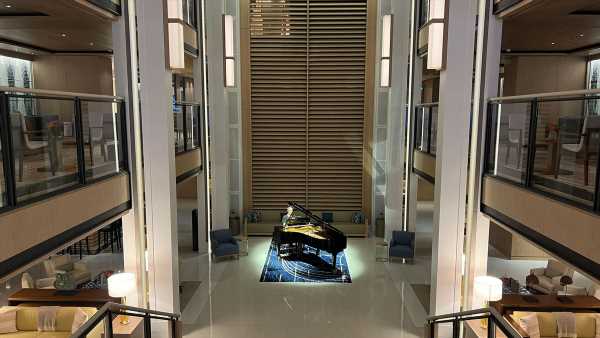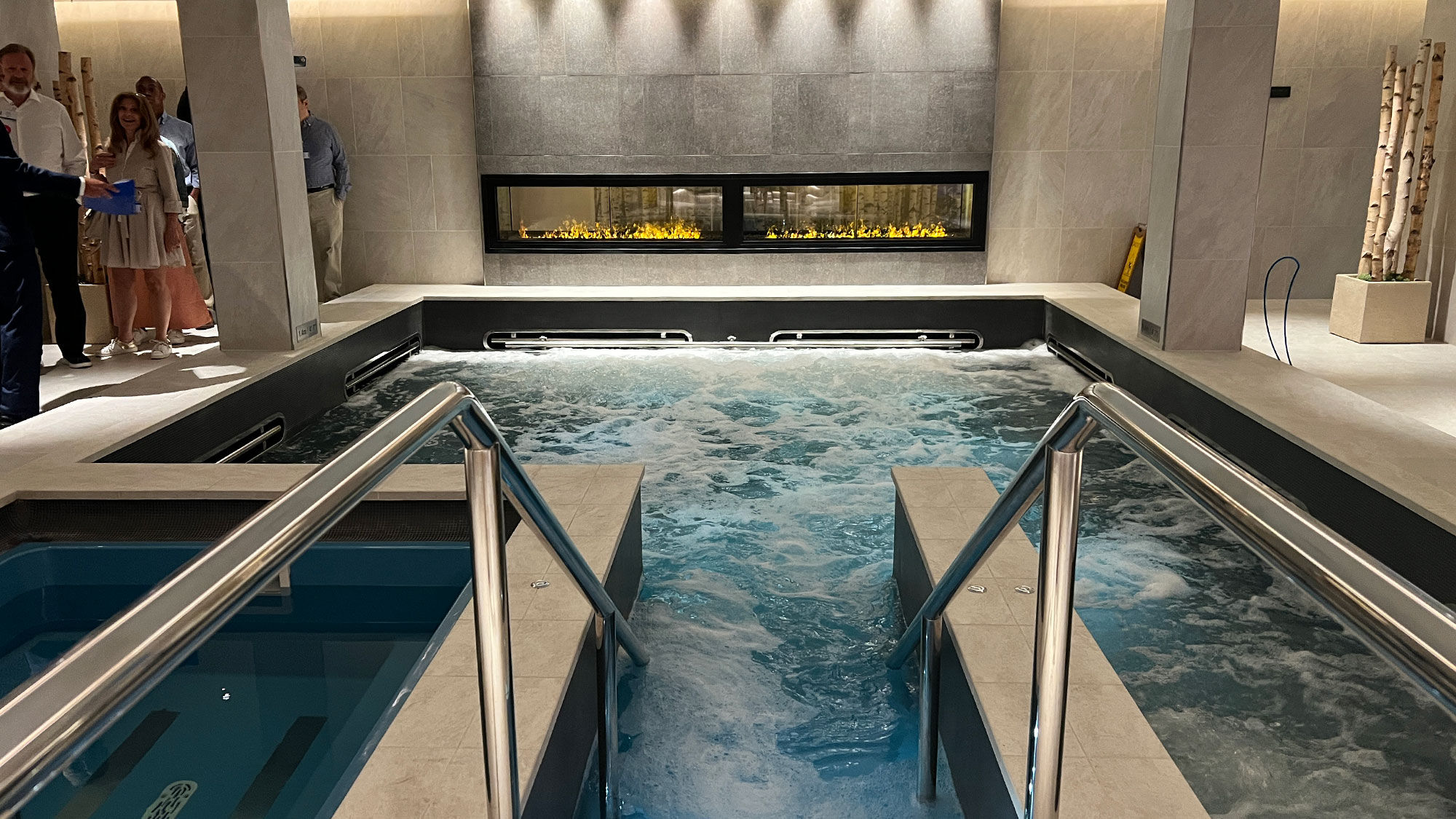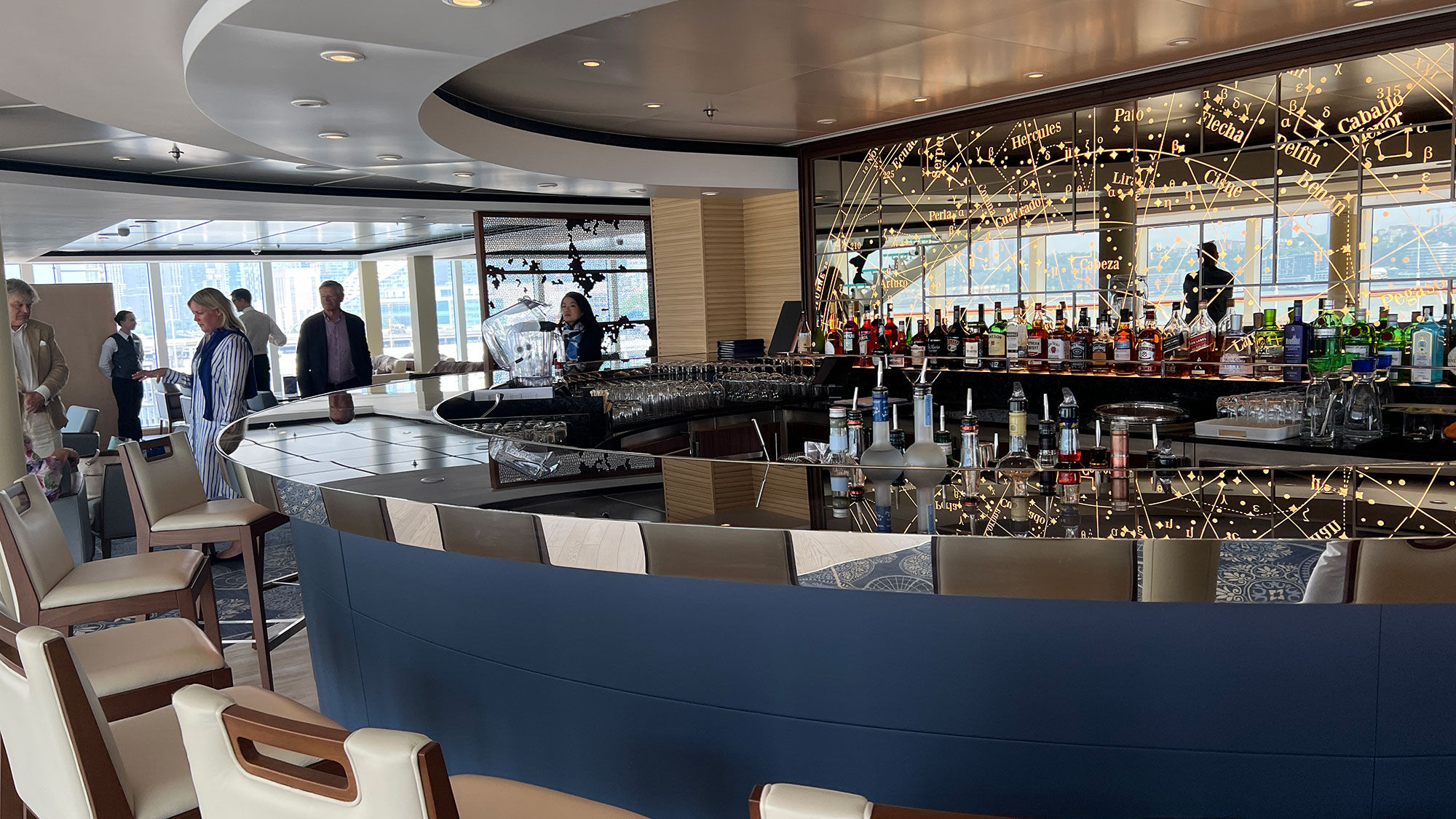
ONBOARD THE VIKING SATURN — As a cruise company, Viking is well known for doing things a little differently. As chairman Torstein Hagen says: “We’re quite different from the big guys. We’re very proud of what we are.”
One of the ways Viking differentiates itself is to make all of its oceangoing ships exactly the same in size, layout and design. Scandinavian decor and what the line calls “residential design” has been a hallmark of Viking since it was solely a river-cruise line, and it continued the ethos when it introduced its first oceangoing ship in 2015. Its 10th in the series is the Viking Saturn, which it brought to New York June 6 for its naming ceremony.
“The benefit of that, of course, is that you feel at home once you come here,” Hagen said. Guests, he said, “know exactly where the things are, and the staff knows where things are.”
A look at Viking Saturn
I did a walk-through of the Saturn before a presentation by Hagen and the naming ceremony that evening. Viking’s ships are relatively small, 930 passengers, but some of the differences between it and conventional cruise-ship design kept me on my normally finely honed ship-tour toes. For example, the spa, instead of being forward on the top decks, is on Deck 1, close to the waterline. The space that might otherwise be used for a spa is instead an impressive two-deck, observation lounge and bar called the Explorers’ Lounge.
In the spa’s thermal suite, guests at the event piled into the Snow Grotto, a small room filled with, well, snow and cold air. Adjacent is the sauna and steam room, which makes sense: In fact, Viking’s website said that visiting the sauna and steam room and then hitting the Snow Grotto is the “ultimate Scandinavian tradition.”
- Related: Cruise editor Andrea Zelinski braves Viking Octantis’ bucket shower
In the atrium, around the pool and the Explorers’ Lounge, light-wood tones and cream colors prevail. Bookshelves (with actual books) is a primary motif. In a few places – particularly the starboard side of the Explorers’ Lounge — a faux fireplace, behind glass, provides a burst of decorative warmth and atmosphere.
One of the most striking public spaces on the ship(s) is the Wintergarden, where columns resembling tree trunks stretch up to a latticed overhead design, reminiscent of being under a tree canopy. Light and bright, it’s next to the pool, which has a retractable roof – ideal for those chillier climes, like on Viking’s signature Viking Homelands cruise, a 15-day voyage from Stockholm to Bergen, Norway.
And one area of interest to art lovers: A small but impressive collection of sketches by Edvard Munch in the Living Room are on Deck 1. Viking has a partnership with the Munch Museum in Oslo, Norway, and it says it hosts one of the largest collections of his work outside of the museum. (The line has several cultural partnerships, including with the Metropolitan Opera in New York; its chairwoman, Ann Ziff, is the Saturn’s godmother.)
I made my way to the Theater on Deck 2 forward. Unlike on other cruise ships, I did not have to cross the casino to get there; there isn’t one on Viking vessels.
“We are quiet, and nice, and residential,” Hagen said in his presentation.
Viking’s attention to small details
But it’s not just the overall design of the Viking ships that makes them special, he said: In his presentation following my walk-through, he asserted that it’s Viking’s attention to small details and functionality that set it apart.
A slide in his presentation included images of several fairly mundane objects: a TV remote control with about a half-dozen buttons, shower toiletries, a wastebasket and dining room chairs with square backs. The slide was titled: “Attention to detail for simplicity, function … and comfort.”
“We have a remote control for the TVs that doesn’t require a teenage son to operate,” Hagen said. (Which is good, since children under 18 are not allowed on Viking ships.) The audience laughed.
“I’m very proud of the square trash cans,” Hagen deadpanned. “That may not mean anything to you. But I like to throw things in a corner. And if it’s in a corner, you can use both walls; you can bounce off the other two walls.” The audience laughter reached a crescendo. “So it makes it effective,” he said, finishing his point.
And here’s what’s so good about square-backed chairs: “We were at a restaurant last night, and you know gentlemen, or even nongentlemen, like to take off their jackets sometimes during dinner,” Hagen said. “And if you have a rounded back on the chair, where the hell do you put your jacket?”
And finally, the bathrooms. Viking specifically goes for shower controls and toiletries that are easy to read and use, and the showers take up less space than bathtubs, space that Hagen said was better used in the cabin itself – or to add additional cabins to bring down the price point.
After the naming ceremony, I settled into a loveseat in the Explorers’ Lounge for a quick email check before dinner. The chair was comfortable; the room’s chairs, couches and tables were grouped functionally; and the decor was simple but not demanding – clearly, the focus would be on the view from the huge glass windows.
I was reminded of Hagen’s slide: Simplicity, function and comfort.
Source: Read Full Article













